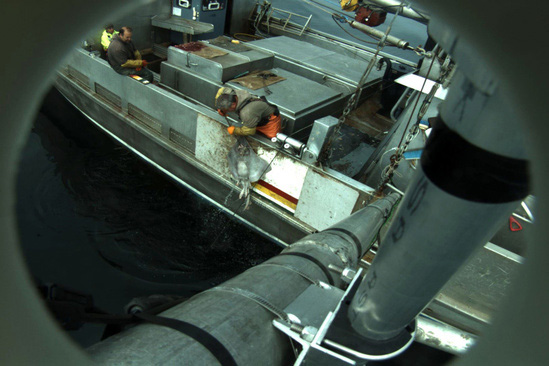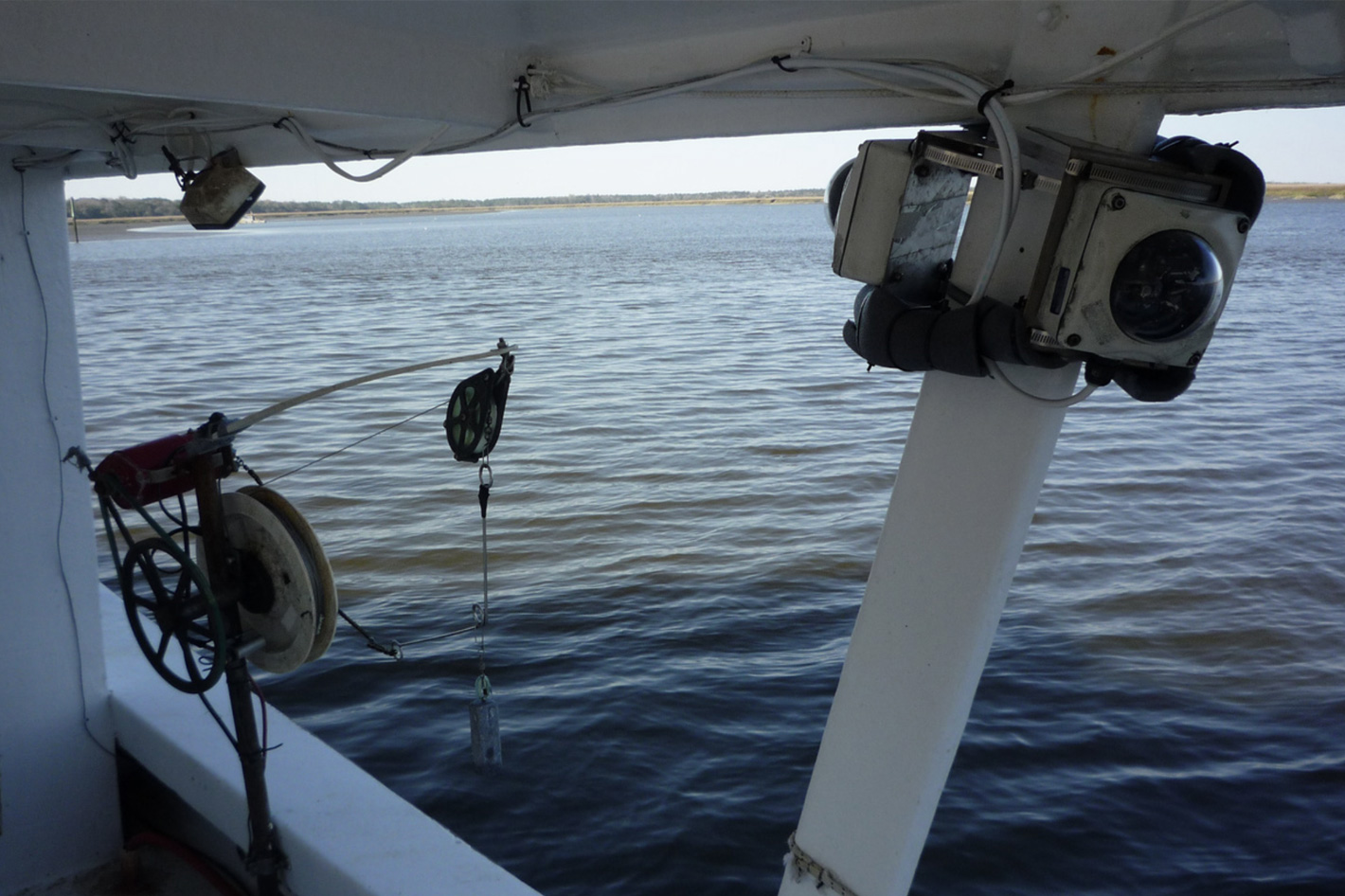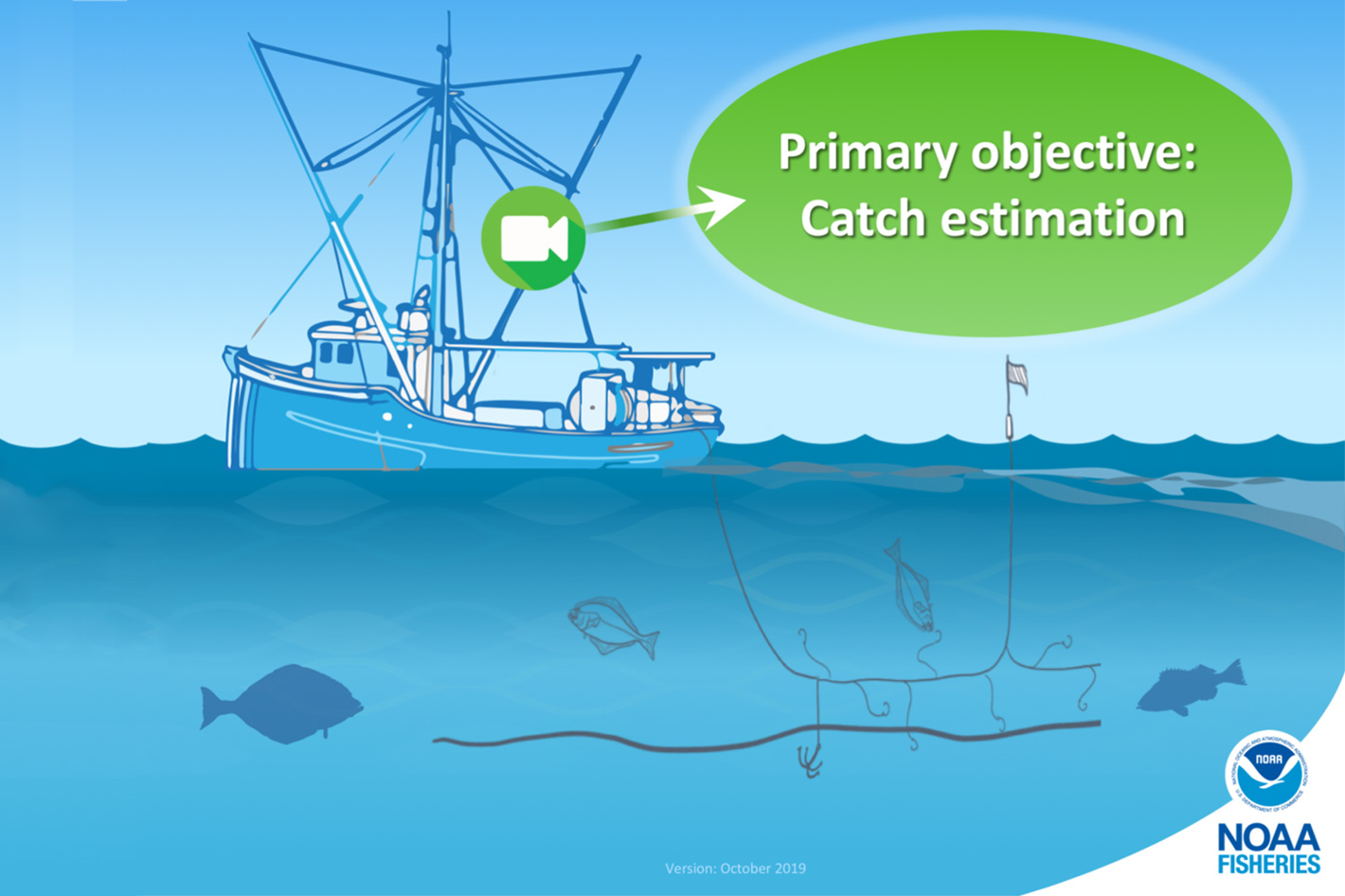The challenge to get observers for the pollock fishery in Alaska’s Bering Sea led to the use of electronic monitoring technologies, which are empowering the pollock fleet.
The Alaska pollock fishery is one of the most valuable in the world, and that may explain why it has been at the core of some experimental projects that aim to allow for better management of resources while minimizing impacts to other species, like the Chinook salmon, that are commercially and culturally valuable species. According to NOAA, “the pollock fishery has a very low rate of bycatch (less than 1 percent)” but, still, there is, says the agency, “a cap on Chinook bycatch. When it’s met, the fishery for pollock is closed.”
The system has worked well. NOAA noted, recently, that “the pollock fishery in Alaska’s Bering Sea is rationalized, which means each vessel/permit holder is allocated a certain amount of catch for the season. But the Gulf of Alaska pollock fishery is open access, with every vessel racing against the others for catch.”
The Alaska pollock fishery is a prime example of how science-based management and monitoring can help ensure the long-term sustainability of the resource, and the Bering Sea fishery is one of the first U.S. fisheries to be managed with catch shares and is often considered one of the best-managed fisheries in the world.

Electronic monitoring and privacy challenges
Electronic monitoring has helped to empower the pollock fleet and the introduction of EM systems started because of a problem that is common in remote areas: getting observers in time to jump on the fishing vessels. With places as the fishing port of Sand Point, about 600 miles southwest of Anchorage, only reachable by boat or air, it’s difficult, sometimes, to guarantee observer availability, due to challenging weather conditions.
According to NOAA, “traditionally, fisheries observers were randomly assigned to 20 to 30 percent of the trawler fishing trips to collect data on catch” but since 2019, the fleet and other trawl organizations in the Gulf of Alaska started to use electronic monitoring technologies there were just emerging. The process started one year earlier, in 2018, when NOAA Fisheries developed regulations to allow small fixed gear vessels in partial coverage to opt into the EM selection pool for the calendar year rather than carrying an observer.
Electronic monitoring technologies were used side by side with observers for the first year and then continued under an exempted fishing permit beginning in 2020. An exempted fishing permit is a permit issued by the Alaska Region to allow fishing activities that would otherwise be prohibited under federal regulations. These permits are issued for limited experimental purposes to support certain projects. According to NOAA Fisheries, “a number of electronic monitoring (EM) technologies have been applied to fisheries monitoring. Within the North Pacific, video technology is used for estimating catch and discard for fisheries management and monitoring for compliance with regulations.”
Electronic monitoring onboard fishing vessels, due to the 24/7 nature of the cameras, creates some privacy challenges, as expected, but that has not stopped the project from going ahead. National Fisherman mentioned, last July, a documentary that shows how fishermen in the United States are adopting new technologies, like electronic monitoring, onboard their vessels, and reflects on some of the privacy challenges they may create and what’s being made to solve them. For some fishermen it feels as if they are being filmed for the Deadliest Catch TV series without ever seeing the episode.

There’s no one-size-fits-all solution
Despite all the challenges the project has faced, on the Gulf of Alaska, according to NOAA Fisheries, “Sand Point and nearby King Cove, nearly all the pollock trawl fleet is now covered through EM systems. The handful that have not yet adopted the technologies are slated to do so soon.”
The use of electronic and video monitoring on fishing boats is not exactly a new idea, and one of the first implementations takes us back to the Summer of 2015, when every boat in the U.S. Atlantic longline fleet was equipped with a video monitoring system. It culminated years of cooperation between scientists, managers, and fishermen, all working together to design a functional system that worked for the longline fleet.
The introduction of the system, which represented a milestone, also confirmed one thing: although the system is going to be a key part of fishing ships in the future, there’s no one-size-fits-all solution. That’s the reason why NOAA Fisheries has worked with fishermen in different fisheries to support over 30 electronic monitoring pilot projects over the past decade plus.
One thing is true: these innovative technologies hold promise in making data collection more timely, accurate, and cost-efficient for everyone. To learn more about how NOAA Fisheries is investing in technology fishermen use to track their catch follow the link to the page under the title Electronic Monitoring Explained.







